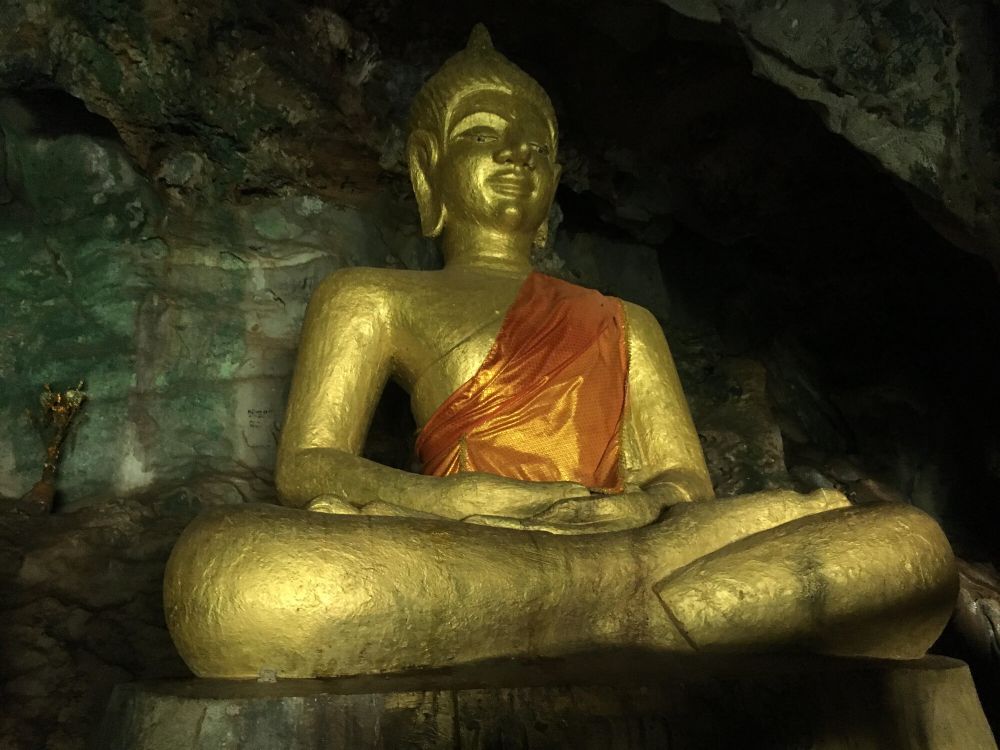

The Buddha Cave, also known as Tham Phabang, is a serene and historically significant site located near Thakhek, the capital of the Khammouane Province in central Laos. The cave is renowned for containing valuable Buddhist artifacts, including a stunning golden Buddha statue which is revered by the local community.
Tourism at the Buddha Cave has a relatively recent history when compared to other ancient sites in Laos. The cave gained significant attention in 2004, when the golden Buddha statue was accidentally discovered by a local villager. Since then, Tham Phabang has become an increasingly popular destination for both domestic and international tourists.
The cave is nestled in a majestic limestone mountain, which is part of a larger complex of caves that includes the renowned Konglor Cave. The Thakhek Loop, a popular motorbike circuit, has been pivotal in providing access to these remote natural treasures, contributing to the gradual increase in tourist activity in the region.
Improvement of Infrastructure: To support the growing tourism industry, significant investments have been made to improve infrastructure around Tham Phabang. This includes better roads leading to the cave, the addition of guided tours, and the establishment of visitor centers to educate tourists about the historical and spiritual significance of the cave's contents.
Conservation Efforts: Recognizing the importance of preserving such a culturally rich site, conservation efforts have been initiated to protect the cave and its artifacts from damage. This is to ensure that the site remains in pristine condition for future generations of visitors.
Tourists visiting Tham Phabang can expect a tranquil atmosphere, complemented by the natural beauty that surrounds the cave. Upon entering, visitors are greeted by the sight of well-preserved Buddha statues and religious iconography, which are thought to be hundreds of years old.
Guided tours offer an informative narrative of the cave's history, the significance of the artifacts, and the role of Theravada Buddhism in Lao culture. These experiences provide tourists with a deeper appreciation for the site's spiritual and historical importance.
In recent years, a trend in eco-tourism and sustainable travel practices has been emerging in Laos, with Tham Phabang being no exception. Tourists are increasingly seeking authentic experiences that also contribute to the preservation of the cultural and natural environment.
Furthermore, there has been a rise in community-based tourism, where local villages benefit from the influx of visitors. Tour operators in the area are focusing on creating packages that support local livelihoods while providing an immersive cultural experience for tourists.